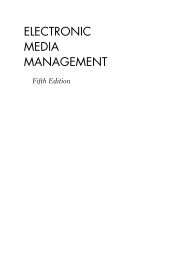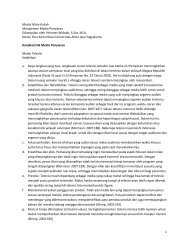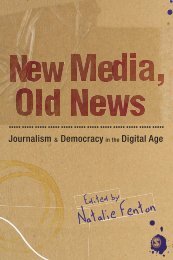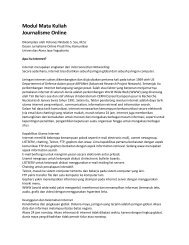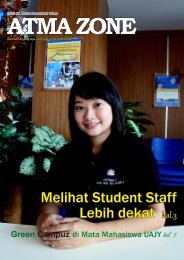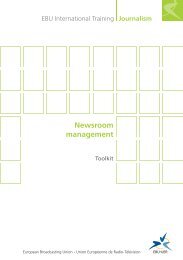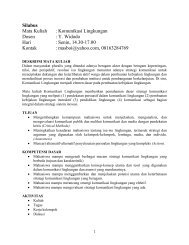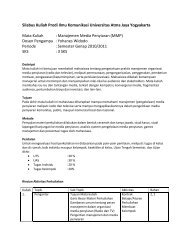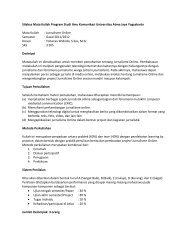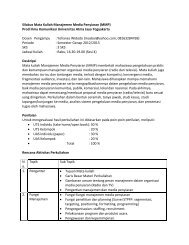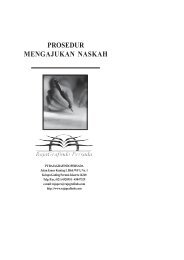Online Journalism - Ayo Menulis FISIP UAJY
Online Journalism - Ayo Menulis FISIP UAJY
Online Journalism - Ayo Menulis FISIP UAJY
Create successful ePaper yourself
Turn your PDF publications into a flip-book with our unique Google optimized e-Paper software.
70 <strong>Online</strong> <strong>Journalism</strong><br />
As the inverted pyramid structure of the traditional print news<br />
story adds progressively further layers of detail to the bald headline<br />
that it commences with, a complementary flow opens the reading<br />
with a plurality of meaning(s) which are discounted until a single<br />
final truth is determined upon. The final all-encompassing version<br />
ties all the narrative elements together and comprises the definitive<br />
meaning or truth which explains the story. Even in instances where<br />
the story derives from a variety of sources, these will be given appropriate<br />
inflections to allow such a resolution. For lead stories,<br />
especially those concerning war, politics and morality, this truth will<br />
often be repeated and underpinned in the opinion/editorial section<br />
of the paper.<br />
<strong>Online</strong> news stories are not so easily shoehorned into the inverted<br />
pyramid shape and their many strands might be more comfortably<br />
expressed as a net or matrix. This more complex narrative form<br />
achieves readerly gratification through ‘patterns of exploration and<br />
discovery’ 5 rather than any tendentious and partisan closure. Readers<br />
are able to become more roundly informed but they are less likely to<br />
meet the truths or sureties of traditional op/ed sections. <strong>Online</strong> journalism<br />
claims to do no more than bring some parts of the story<br />
together in what the reader strives to secure as a comprehensible<br />
structure. As is clear from the form itself, neither reader nor journalist<br />
can assume that all the parts are present or even available. The mystification<br />
that is routinely practised by traditional journalism on this<br />
account, through the spurious claim to comprehensive, even total,<br />
coverage, is not available to the online journalist.<br />
Any understanding of the story which ensues is dependent on the<br />
narrative trajectory and context which the reader weaves around it.<br />
Janet Murray describes this as mapping the story. She points out the<br />
importance of an effective and informed navigation process and how<br />
association can completely change the meaning of each lexia<br />
through its juxtaposition with different information. She cites Lev<br />
Kuleshov’s demonstration in the 1920s of how ‘audiences will take<br />
the same footage of an actor’s face as signifying appetite, grief, or<br />
affection depending on whether it is juxtaposed with images of a<br />
bowl of soup, a dead woman, or a little girl playing with a teddy<br />
bear’. 6 Along with the loss of control over the positioning or context<br />
of their writing, the lexias that precede or follow it, the journalist<br />
loses the ability to either resolve it or determine its meaning. While



